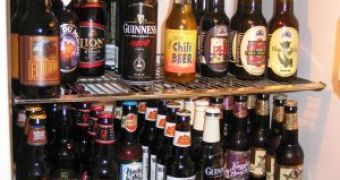Fridges do not stop messing with the planet. After CFC gases dumped in the last decades into the atmosphere that destroyed a lot of the ozone layer, now another fridge issue is increasing the expelled amount of greenhouse effect gases. Eliminating "beer fridges", old devices encountered in many North American and Australian houses, could cut some percent of the emission of carbon dioxide, as signaled by a new Canadian research.
"Beer fridges are additional fridges that are generally used to keep beer and other drinks cold on top of a household's primary fridge for food. One in three Canadian households has a second fridge, many of which are aging, energy-guzzling models. Getting rid of older models, in Canada at least, would have an impact on energy usage," said author Denise Young, a researcher at the University of Alberta, Canada.
A national survey revealed that 30% of the Canadian households harbor two or more refrigerators and one in five secondary fridges are older models kept by the owner after achieving a newer model as primary refrigerator. But this habit increases energy consumption, especially if the second fridge is an old type.
1985 refrigerator models consume 1060 kilowatt-hours (kWh) of energy annually, a 1975 model 1580 kWh annually, while latest models just 380. 65% of beer fridges are older than 10 years and 30 % are over 20 years old. This means that the 65% of beer fridges older than 10 years waste 1165.7 million kWh annually, as much as 100,000 American suburban households.
"By abandoning beer fridges altogether, Canada's 11.5 million households could save 3500 million kWh each year," said Young.
Low-income families also appeared to be more likely to employ old refrigerators as primary fridges.
"This is probably because these households find the cost of running an additional fridge (up to $150 per year) too high. Middle- to high-income families should be targeted by campaigns to remove old secondary refrigerators." said Young. Still, the impact of beer fridges is linked to the source of electricity.
"In Canada, there are major regional differences. In places where hydroelectric power is used, the greenhouse gas emissions are negligible. In places where coal or natural gas are used, the impacts can be substantial." said Young.
Her study shows that while a 1975 fridge in British Columbia (which gets most electricity from hydropower) translates to a minor rise in emissions, while in Alberta (producing electricity mainly from burning natural gas and coal) it implies 1.4 tons of extra carbon dioxide pumped annually in the air.

 14 DAY TRIAL //
14 DAY TRIAL //